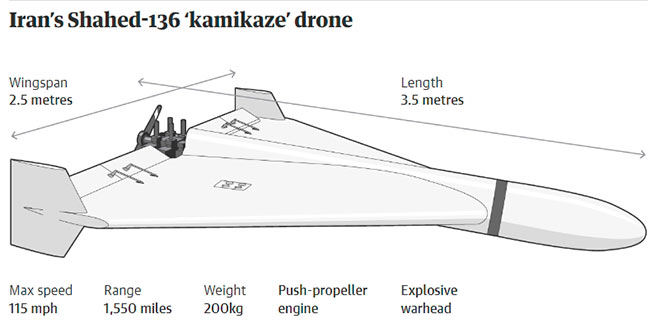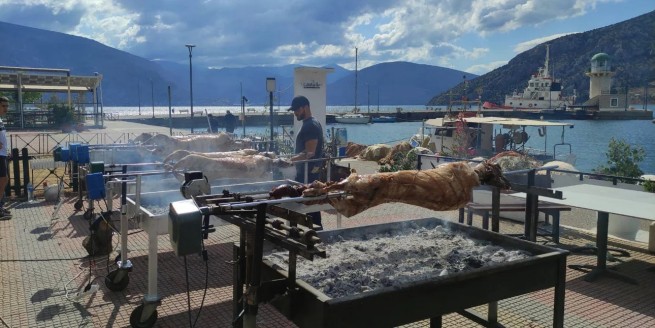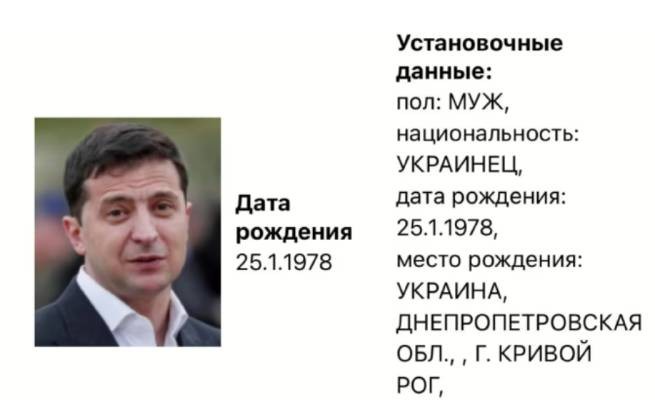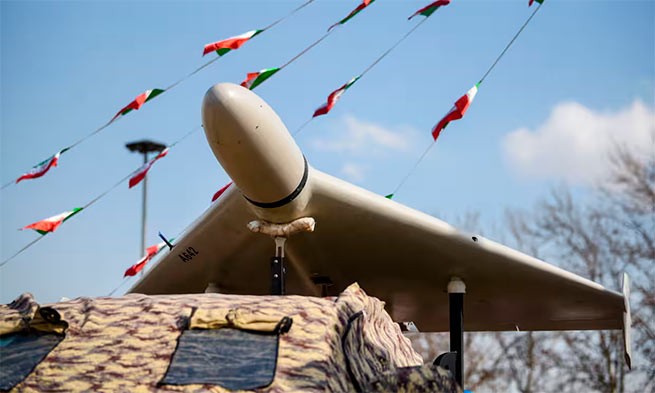Ukraine wants to receive long-range missiles from the West for striking targets in Russia, Iran and Syria, where “Shahed” is produced. The Guardian reports this with reference to a document that Kyiv sent to its partners.
British edition writes: “The above can be carried out by the Ukrainian defense forces if the partners provide the necessary means of destruction.” Ukraine says the Shaheds have 52 European components of five companies headquartered in the United States, Switzerland, the Netherlands, Germany, Canada, Japan and Poland. The publication clarifies that almost all imports to Iran come from Turkey, India, Kazakhstan, Uzbekistan, Vietnam and Costa Rica.
It is now obvious that Kyiv has asked the United States to provide Tomahawk missiles with a range of more than 1,500 km. This means that Kyiv intends to inflate the Ukrainian conflict into a global one. After all, if the strikes on Syria do not receive any response. then strikes on Iran could have far-reaching consequences.
***
Iranian kamikaze drones used in recent attacks on Ukrainian cities are filled with European components, according to a secret document Kiev sent to its Western allies, calling for the use of long-range missiles to attack production sites in Russia, Iran and Syria.
A 47-page document submitted by Ukraine to G7 governments in August claimed that in the previous three months there had been more than 600 attacks on cities using unmanned aerial vehicles (UAVs) containing Western technology.
According to a document obtained by the Guardian, 52 electrical components were found in the Shahed-131 drone made by Western companies, and 57 in the Shahed-136 model, which has a flight range of 2,000 km (1,240 miles) and a cruising speed of 180 km/h (111 mph). hour).
Five European companies, including the Polish subsidiary of the British multinational, are named as the original manufacturers of the identified components. “Among the manufacturers there are companies whose headquarters are located in the countries of the sanctions coalition: the USA, Switzerland, the Netherlands, Germany, Canada, Japan and Poland,” the message says.

Firefighters work to extinguish a fire in a supermarket during a Russian missile and drone strike in Odessa. Photograph: Southern Ukraine Defense Forces/Reuters
According to the document, Iran has already diversified its production, using a Syrian plant supplying the Russian port of Novorossiysk, but drone production is shifting to Russia, to the central Tatar region of Alabuga, although Tehran continues to supply components.
The report said the Iranian government is trying to “dissociate itself from providing weapons to Russia” and “cannot cope with Russian demand and the intensity of use in Ukraine.”
Among the proposals for action by Ukraine’s Western allies, which they will likely not agree to, are “missile attacks on factories producing these UAVs in Iran, Syria, as well as a potential production facility in the Russian Federation.” The document goes on to say the following: “The above can be carried out by the Ukrainian defense forces if partners provide the necessary means of destruction.”
There is no suggestion of any wrongdoing on the part of the Western companies whose parts were identified. “Iranian UAV production has adapted and largely uses available commercial components, the supply of which is poorly controlled or not controlled at all,” the article says.

Customs information, the Ukrainian report states, shows that “almost all imports into Iran originated from Turkey, India, Kazakhstan, Uzbekistan, Vietnam and Costa Rica.”
Bart Groothuis, a member of the European Parliament who sits on the defense and security subcommittee, said that the intelligence services EU are not coordinating enough to deal with the problem of misuse of Western components. “I think many European intelligence agencies are not even considering the possibility of imposing sanctions,” he said.

Explosion during Russian drone strikes in the Orlovka area. Photo: Gabor Petru/Volunteers Without Borders Association/Reuters
The Ukrainian government document “Barrage Deaths: Shahed-136/131 UAV Report” represents the most up-to-date analysis of Russia’s changing tactics and production plans regarding drones since the first use of Shahed drones recorded in the Kharkov region on September 13, 2022 in the city of Kupyansk.
It states:
- The pause in attacks, which lasted from November 17 to December 7, “was likely caused by the adaptation of drones designed for warm climates to the Ukrainian winter,” and this “may indicate additional cooperation between Russia and Iran in the production and modernization of the Shahed-136.” 131″.
- Deliveries of Shahed-136/131 UAVs from Iran to Russia are carried out through the Caspian Sea. “From Tehran, the drones are delivered to the Iranian port of Amirabad, from where they are sent to the Russian port city of Makhachkala.”
- Markings on the electronic components of drones used in Ukraine in recent months have been destroyed, “likely with a laser,” and Russian troops have begun using the names Geranium-1 and Geranium-2 for the drones, which is “likely part of an agreement between Iran and Russia in order to conceal the role of Iran.”
- In early July, a new Shahed-136 designation “Y002” was shot down in Ukraine, which “may have been assembled at a new production facility in Russia.” The sample was reported to have a different wing molding, which “may also indicate production at a new facility.”
- Russia and Iran “are already working on a new engine for the Shahed-136, which should provide better speed and range.”
Models of downed drones found a wide range of components made by Western companies, according to a document presented by the G7, which includes France, the United States, Britain, Germany, Japan, Italy and Canada, as well as the EU.
Shahed-136 was found to contain a fuel pump manufactured in Poland by the German company Ti Automotive GmbH, whose parent company is the British multinational corporation TI Fluid Systems, as well as a microcontroller with built-in flash memory and a very low voltage drop regulator with inhibitor manufactured by the Swiss company STMicroelectronics. the document says.
Also found in the Shahed-136 chip was an integrated circuit for a buffer network driver and a transistor manufactured by International Rectifier, a subsidiary of the German company Infineon Technologies AG.
TI Fluid Systems did not respond to requests for comment. Their equipment is freely available from retailers across Europe, and the company has previously said it does not sell to Iran.

The drone exploded during a Russian strike on Kyiv. Photo: Gleb Garanich/Reuters
An STMicroelectronics spokesperson said: “We work with more than 200,000 customers and thousands of partners around the world. We do not permit or condone the misuse of our products. We have a comprehensive global trade compliance program through which we comply with all international trade rules and regulations. We have an internal export control compliance program that includes training and procedures to ensure compliance with various regulations. Through this program, we provide guidance to our distribution channels to ensure that everyone in our supply chain understands their responsibility for compliance with applicable laws and regulations.”
An Infineon spokesman said it does not sell components to Iran and liquidated its Russian unit in March last year. He said: “Overall, compliance with applicable laws is of paramount importance to Infineon and we have robust policies and processes in place to comply with these laws. We instruct our customers, including distributors, to conduct consistent sales only in accordance with applicable regulations. Monitoring sales throughout the life of a product is quite difficult. Nevertheless, we have taken all possible measures to ensure compliance with sanctions against Russia, striving not only to comply with the letter, but also the spirit of the sanctions.”
In the Shahed-131 model, Ukrainian experts identified a 14-channel custom power management integrated circuit and microprocessor manufactured by the Dutch company NXP Semiconductor, as well as a power transistor and integrated circuit manufactured by International Rectifier.

The consequences of a drone attack on an oil depot in the Rivne region in western Ukraine. Photo: Handout from the Rivne region prosecutor’s office/EPA.
Also found were a 32-bit microcontroller, a 32-bit processor, a microcontroller with built-in flash memory and a very low voltage dropout regulator with inhibitor made by STMicroelectronics, as well as a GPS tracker chip made by the Swiss company U-blox.
A U-blox spokesperson said: “U-blox strongly condemns Russia’s invasion of Ukraine. Immediately in February 2022, U-blox ceased all sales to Russia, Belarus and territories occupied by the Russian army in Ukraine, regardless of U-blox also recently decided not to sell products to members of the Eurasian Economic Union (a free trade zone with Russia).
Since 2002, U-blox has maintained a strict company policy that its products should not be used in weapons or weapon systems – including target identification systems.”
A spokesman for NXP Semiconductor said it is looking for new ways to avoid misuse of its technology. He said: “We do not tolerate the use of our products in Russian or Iranian weapons, or in any other applications for which our products were not developed or licensed. We continue to comply with export control and sanctions laws in the countries where we operate.” and we do not support any business in or with Russia, Belarus and other embargoed countries, including Iran. Our team is in constant contact with regulators around the world on this issue, exploring additional measures to neutralize illegal chip leaks “.
The above can be carried out by the Ukrainian defense forces if the partners provide the necessary means of destruction,” Kyiv proposes.Ukraine says the Shaheds have 52 European components of five companies headquartered in the United States, Switzerland, the Netherlands, Germany, Canada, Japan and Poland. Moreover, almost all imports to Iran come from Turkey, India, Kazakhstan, Uzbekistan, Vietnam and Costa Rica.
According to the document, Iran has already diversified its production by using a Syrian plant with delivery to the Russian port of Novorossiysk. Drone production is also moving to Russian Tatarstan. The document states that the Iranian government is trying to “disengage from arms supplies to Russia” and “cannot cope with Russian demand and the intensity of its use in Ukraine.”







More Stories
The Russian Federation has put the Ukrainian president on the wanted list for an unnamed "Article of the Criminal Code"
Deputy Head of the Main Intelligence Directorate: "Such wars can only end with agreements"
What blew up the Crimean Bridge in 2022